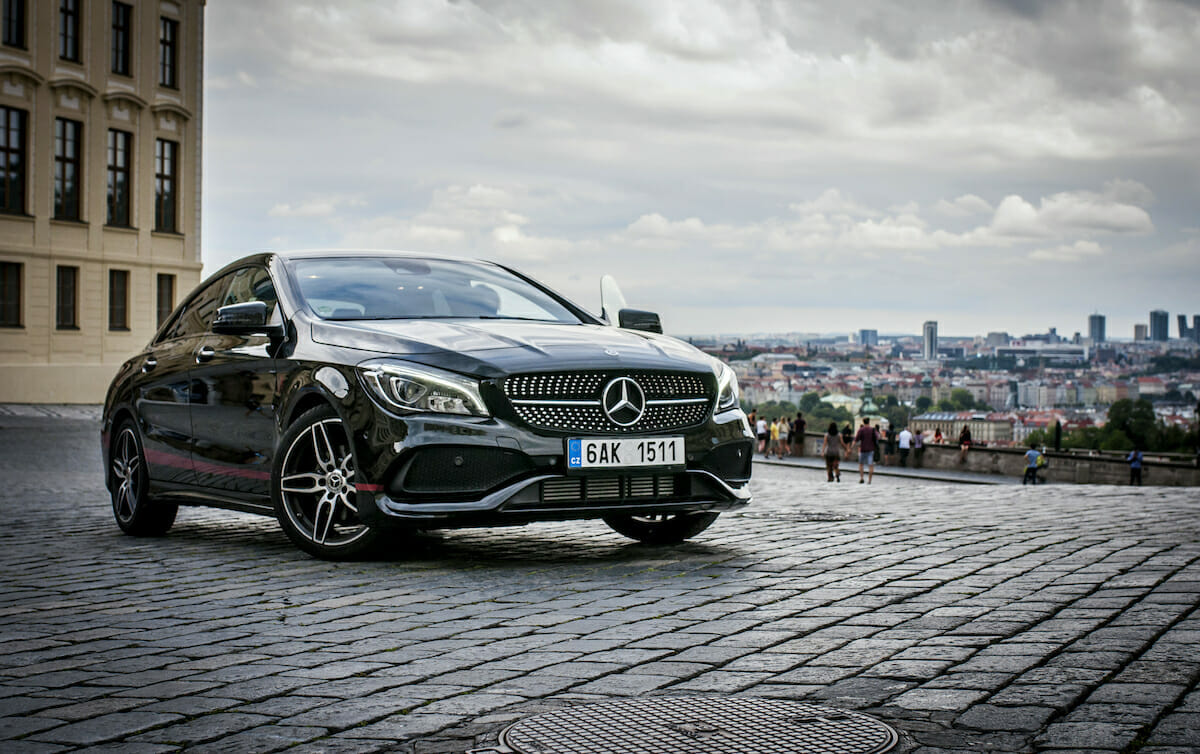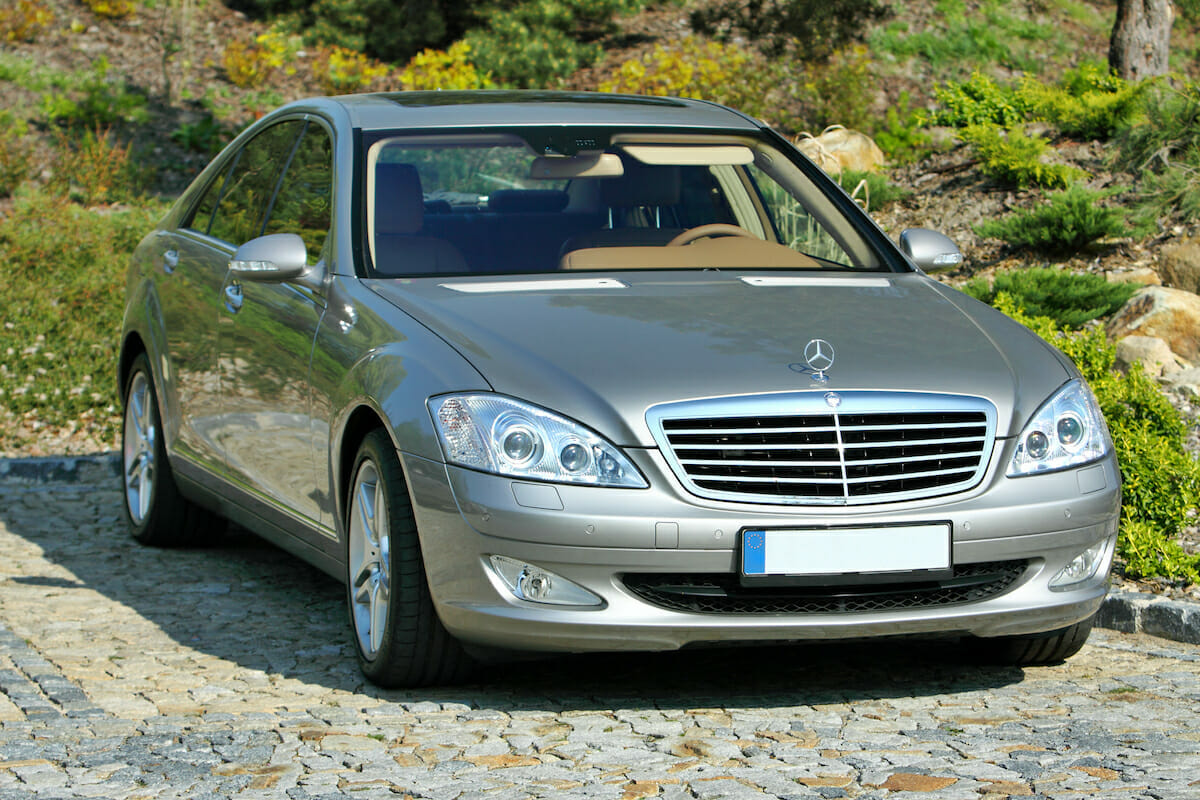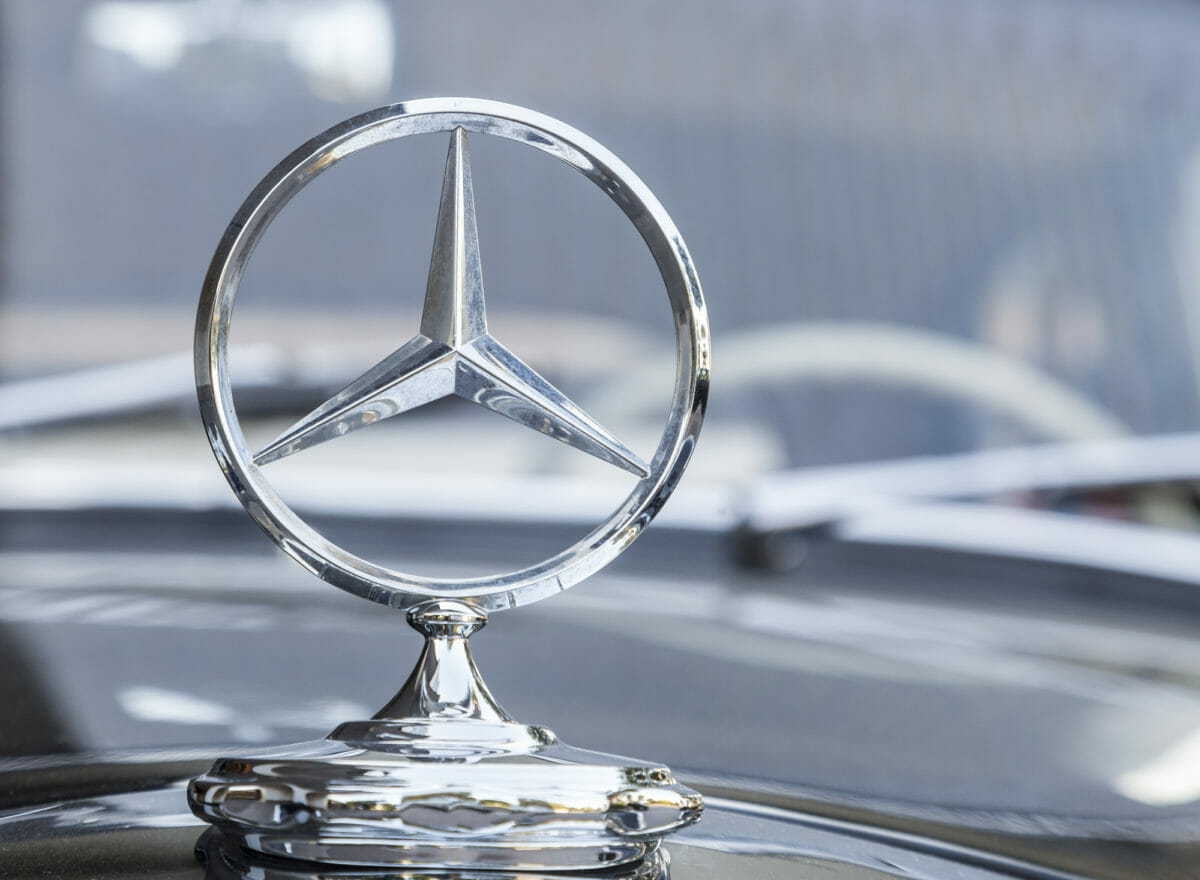
Depreciation allows you to buy caviar cars at crackerjack prices. Here’s everything you need to know when buying pre-owned.
The average transaction price of a new car in the United States in January of 2021 was $40,857. The average price of a new Mercedes-Benz in that time period is considerably greater at $65,754, and it isn’t hard to appreciate why. For nearly a century, the German manufacturer has been the benchmark for luxury cars. With that premium price, Mercedes is aiming its new cars at well-heeled customers. But, what if you want the luxury, safety, and style at a more reasonable price? The used Mercedes market is abundant, and buyers have lots of choices — even if your budget is around $10,000.
How Do I know which Pre-owned Mercedes is Right for Me?

Up until the 1990s, a luxury car was just that, a car. Mercedes’ main product lines consisted of sedans, coupes, convertibles, and station wagons. Everything changed in 1998 with the introduction of the ML, the company’s first mainstream luxury SUV. Yes, the G-Classe preceded that by 20 years, but it was a very niche, off-road-centric model until recently. The depth of Mercedes’ offerings exploded in the 2000s. It currently offers everything from the A-Classe premium entry-level compact up to large luxury sedans, supercars, and even segment-defining luxury SUVs.
With a budget of $10,000, a buyer will be able to choose just about any of the segments Mercedes has occupied throughout the years. The search for the right vehicle for you starts with a few important questions:
- Do I want a Sedan, a coupe, convertible, or an SUV?
- Do I expect most of the modern conveniences, like keyless entry, smartphone integration, and electronic driver assistance?
- Do I want a classic car experience, with all the pros and cons that entails?
- Can I afford to keep a luxury car maintained?
Making Amends in a 1960s Mercedes-Benz
The great Janis Joplin opining for the lord to deliver a Mercedes-Benz may have been a bit tongue-in-cheek, but all these years later, the sentiment doesn’t seem as ironic. The cars were built tough and engineered to last, quite the opposite of the consumerism she was condemning. Older models, particularly the diesels, are well known for lasting hundreds of thousands of miles with regular maintenance. The level of comfort is in most ways comparable to modern cars and even better than some late model economy cars. They will, however, lack some of the modern conveniences, like automatic climate control, power locks, and driver’s aid systems we now take for granted.
The upside is a classic Mercedes is still an elegant car that makes a statement. Realistically, a car from the 1960s isn’t going to be your primary car, but as a second car, is not only a fun luxury item but could even be considered an investment. Every drive will be an occasion and the car will attract attention everywhere you go. A nice 1960s Mercedes 280SE or similar will allow you to pull off the affluent automotive collector appearance with a car within our $10,000 budget.
Mercedes During the 1970s
The 1970s were the heyday of the long, low, and elegant Mercedes SL. During the disco-era, this was the car to have for every showbiz exec commuting from their Bel Air mansion to the Hollywood Studio. The cars were built in both convertibles, the SL, and in coupe form, the SLC. Although an SL with the optional hardtop has all the benefits of the coupe, with the only real downside being the storage of a giant roof when you want to enjoy topless driving.
Both the coupe and convertible were offered with a smooth running and reliable V8 with either an automatic or manual transmission. Although modern SLs offer a sports car-like experience, the older cars driving dynamics lean heavily towards comfort and luxury.
Many of these cars were bought as third or fourth cars for households, so clean, low-mile examples are common, but not always the most desirable. Like all German cars, the SL and SLC like to be driven regularly. If you come across a car that has been stored for long periods of time, make sure rubber seals and gaskets are all in good shape. Check for leaks both in the powertrain and around glass and convertible tops. Cars built in 1976 and later will have fewer rust issues, but it is still something to look for. Although nothing is ever guaranteed in car values, a good SL or SLC in the $7,000 range has to be near the bottom of its depreciation curve.
The 1980s: From Old Money to Modern Hipsters
The classic SL carried over into the late 1980s, but as time went on, it was burdened with bigger bumpers, more emissions equipment, and the added complexity diminished the attractiveness of the simple roadster. Mercedes sedans however were demonstrations of luxury and class. The yuppie movement of the 80s embraced the lighter and sportier BMWs of the day, but the old money stuck with Mercedes.
Today, the Mercedes 300 D, 420 SEL, and 560 SEL are as much a part of hipster culture as pour-over coffee and avocado toast – ironically of course. These are the last Mercedes wearing chrome bumpers and upright grilles with the SELs in particular, looking a bit naked without diplomatic-flags atop the front fenders.

The diesel sedans are as well known for their lack of power as their longevity. Besides being nearly bombproof, the Diesel sedans and wagons offered fuel economy comparable to modern cars, returning around 30 MPG around town and higher in highway cruising. Unlike modern cars, 0-60 mph times are in the mid-teens.
Mercedes naming conventions of the time meant the 560 SEL was equipped with a 5.6L V8. The big sedans can get to 60 mph in around 8 seconds, still decent by today’s standards. The interior of these cars will still feel luxurious today with great swathes of leather and wood. If you’re looking for a Mercedes with a still classic style, but with the modernity of things like ABS brakes and full power accessories, the mid-80s sedans will deliver.
Smoother & Faster into the 1990s Computer-Age
The technology boom of the 1990s would mark a turning point in the evolution of Mercedes products. First, Italian designer Bruno Sacco steered the company’s design language in a direction that looked forward to the new millennial. Starting with a new, larger SL roadster the styling was cleaner and monolithic. It transferred beautifully to the full-size S-Classe as well, getting rid of the chrome flourishes that dated the look of older cars.
The early ’90s saw the introduction of the C-Class and E-Class. At the time, the C was Mercedes’ new entry-level offering and the E was the midrange.
Of these two cars, the E-Classe is going to be the better-built car and falls well within the budget. Buyers will want to be aware of rust and only buy cars with documentation of a full-service history.
In 1997, Mercedes introduced the M-Class, which was built in Vance, Alabama. While these SUVs certainly fall within the $10,000 budget, early production quality issues mean you probably want to look for later models.
Surfing the Web & the SUV Wave in the Early 2000s
The beginning of the 2000s saw Mercedes’ product portfolio explode. Every sedan had a comparable coupe and convertible. The M-Class SUV continued and was joined by the larger GL and later the smaller GLK. There was even the short-lived R-Class, a pseudo minivan station wagon combo.
The entire product line shared everything from power trains to chassis components, so there won’t be big variations in reliability. If you are concerned with the cost of maintenance and repairs, keep a few things in mind. The old adage is true: the more equipment it has, the more it has to break. Avoid things like air suspension and power convertible tops. Rust shouldn’t be an issue at this age, but avoid cars that have had body repairs.
Are Mercedes-Benz Reliable Cars?
For the most part, buying a used Mercedes that has been well maintained by previous owners will be a reliable and dependable vehicle. But, being reliable isn’t the same as being affordable to maintain. A Mercedes starts life as a premium automobile; it will command premium automobile maintenance prices for its entire life. The advantage of spending extra to get a car that has been meticulously maintained disappears quickly if you aren’t willing to uphold those standards. For many owners, the only way to keep the experience affordable is to perform the maintenance themselves. Finding a good independent mechanic is mandatory, either way.
Deciding on the Right Pre-Owned Mercedes
If you’re considering buying a preowned luxury vehicle, you want it for reasons beyond basic transportation. With all the information above, you should have narrowed down your focus to at least a generation and a body style of Mercedes that fits your needs best. But, this is an emotional purchase, don’t be afraid to follow your emotions – just be sure your heart isn’t outspending your head.
Photos: DepositPhotos: Tadeas; benedamiroslav;
